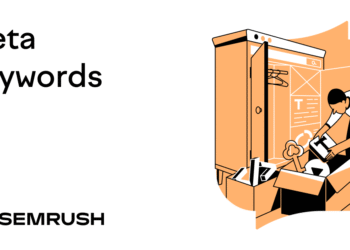
Plus: Yahoo’s creative PR campaign leverages email burnout to launch product; New York now tracking AI-related layoffs.
Thursday’s Air India tragedy sparked horror and uncertainty as officials worked to determine the cause of the crash that left hundreds dead.
Air India’s CEO Campbell Wilson was quick to get on camera and get a message out via X.
He began by standing at a podium in a crisp suite under bright lights, acknowledging that the airline was aware of an incident with Air India 171. The plane took off from Ahmedabad en route to London Gatwick and crashed into a medical facility shortly after takeoff.
“I know that there are many questions, and at this stage I will not be able to answer all of them,” Wilson said. “But I do want to share the information we do have at this time.”
Good. Transparency.
He goes on to list logistics of the aircraft’s route and number of passengers on board. He offers a hotline that concerned family members could call for additional support.
Message from Campbell Wilson, MD & CEO, Air India. pic.twitter.com/19MiwtkwAI
— Air India (@airindia) June 12, 2025
Why it matters: Unfortunately, what Wilson doesn’t do is make any sort of expression. He stands in a stiff position and speaks in a monotone voice.
It’s not easy to have to share this kind of news, but if you’re going to do it on camera, you’ve got to show some empathy for those most impacted. I’m sure that Wilson is a fine leader, and likely a nice person. And while it’s obvious that Air India felt the CEO was needed to speak to a story of this tragedy and magnitude, he may not have been the right on-camera spokesperson for this message. Someone who was more comfortable and emotive might have been a better choice, while Wilson could have followed up with a written statement to ensure that the CEO’s hand was visible.
Failing that, better media training could have made a difference here. Unfortunately, a crash is a very foreseeable issue an airline CEO may have to deal with. Training on coming across as more sympathetic and natural could have gone a long way here.
Our thoughts are with Wilson, Air India, and the families and survivors of this terrible crash.
Editor’s Top Reads:
- Back in March, New York state added parameters to its Workers Adjustment and Retraining Notice that requires businesses to report AI-related layoffs for companies with at least 50 employees and which are laying off one-third or more of their workforce. It is the first state to require a disclosure like this. LinkedIn reports that so far, no businesses have attributed any layoffs to AI under WARN This is an interesting tactic and one that could set a precedent for AI-related legal framework down the road. From a PR perspective, it could put businesses in a tight spot by having to name the number of layoffs as well as what kind of tech justifies the cuts as a matter of public record. As Bloomberg workplace reporter Jo Constantz noted in the news piece, “Experts caution, however, that reputational risk may lead to underreporting.” Several companies, including Google, Business Insider and Duolingo, have addressed AI-related job cuts in recent months, with many taking major PR hits for replacing people with machines. New York’s law could hasten these PR disasters, or companies could get clever to circumvent it. Regardless, companies with New York operations should plan strategies now.
- Yahoo has launched a new AI tool that helps organize and sift through emails. Let’s be honest, no one likes more emails. If you’re anything like me it’s a massive trigger to see notification after notification pinging from your phone, especially before the workday even begins. Yahoo gets that email fatigue is a real thing. With that insight, they did something really clever to launch their new tool. Yahoo reports: “The tech company has teamed up with streetwear company Anti Social Social Club on a limited-edition apparel collaboration in celebration of the new launch. This collab appeals to Yahoo Mail’s target audience and their changing behavior. Yahoo is also playfully poking fun at our disdain for email clutter. It’s like saying, “I feel you. Emails stink. Let’s be anti-email together, in a club.” Partnering with the Anti Social Social Club to add merchandise to their messaging is also smart. It gives the brand a way to connect with authenticity. It also has the potential for a viral moment, with people posting their merch on social channels, furthering engagement and promoting their product. The messaging is clear, fun and it spells out exactly why an AI-powered email clean up product is the best thing you can have in your toolkit right now.
- It’s no secret that DEI has been a tricky subject to navigate. On the one hand, businesses are grappling with complying to federal orders to eliminate DEI in order to avoid becoming a target. On the other, brands don’t want to abandon their core values and alienate some consumers. Wall Street Journal columnist Callum Borchers writes that organizations are finding more ways to reframe or rename their DEI policy rather than abandon it altogether. He says: “Strategies for flying under the radar include ditching the DEI acronym and applying a blander label, like ‘employee engagement,’ to similar programs. Some employers are using third parties to recruit diverse job candidates so company career pages don’t invite attention. Others are preserving inclusive benefits, like hormone therapy for transgender employees, but no longer advertising them Borchers said that companies like Lowe’s, Dyson and Wells Fargo have all reframed their descriptions of DEI while keeping the core of their policy. This includes Wells Fargo publicly aligning more to veterans, people with disabilities and neurodivergent workers on its “inclusion” policy page but still keeping a section on partnering with HBCUs for internships.
Courtney Blackann is a communications reporter. Connect with her on LinkedIn or email her at courtneyb@ragan.com.
The post The Scoop: Air India struggles to respond to horrific crash appeared first on PR Daily.












